Fed stands pat, projections no move in 2020 and a hike in 2021
Fed left federal funds rate unchanged at 1.50-1.75% as widely expected. The decision was made by unanimous vote, with no dissent. Fed sounds cautious as “business fixed investment and exports remain weak”, with inflation running below target and market-based measures of inflation compensation remain low. Nevertheless, “current stance of monetary policy is appropriate”.
In the new economic projections, GDP forecasts were left unchanged. Unemployment rate projections were lowered to 3.5% in 2020, 3.6% in 2021 and 3.7% in 2022 respectively. Core PCE inflation projections were also left unchanged for 2020, 2021 and 2020.
Federal funds rate projections revised lower as expected. Most importantly, median projections show federal funds rate at 1.6% in 2020, that is, no more rate cut next year. Then, interest rate will climb to 1.9% (one hike) in 2021 and 2.1% (another hike) in 2022. But rates will stays below the longer run average of 2.5%, which is unchanged from September estimation.
US oil inventories rose 0.8m barrels, WTI staying in near term rising channel
US commercial crude oil inventories (excluding those in the Strategic Petroleum Reserve) increased by 0.8m barrels in the week ending December 6, above expectation of -2.9m barrels decline. At 447.9m barrels, crude oil inventories are about 4% above the five year average for this time of year.
WTI crude oil dips mildly after the release. But it’s firstly trying to draw support from 4 hour 55 MEA. Secondly, it’s staying well inside near term rising channel. Overall outlook is unchanged. Choppy corrective rise from 50.86 is still in progress. Further rally is in favor but upside strong resistance should be seen below 63.04 to bring reversal to extend medium term sideway trading. On the downside, firm break of 54.98 support would target 50.86 support instead.
US CPI accelerated to 2.1%, core CPI unchanged at 2.3%
In November, US CPI rose 0.3% mom versus expectation of 0.2% mom. Core CPI rose 0.2% mom matched expectations. Annually, headline CPI accelerated to 2.1% yoy, up from 1.8% yoy, beat expectation of 2.0% yoy. Core CPI was unchanged at 2.3% yoy, matched expectations.
BoJ Kuroda: Global economy relatively bright next year
BoJ Governor Haruhiko Kuroda said together that the “overall global economy is expected to be relatively bright next year”. He noted that economies in US and China are firm. Global economy will also pick up. Additionally, BoJ would need to pay close attention to climate change.
Meanwhile, Kuroda also said BoJ stands ready to step up stimulus if needed. But it’s also mindful of rising costs of prolonged easing. He urged financial institutions to diversify operations, cut costs and consider consolidating businesses.
BoJ said “the domestic and external environment surrounding financial institutions is changing rapidly. The industry is entering an age of reform aimed at rebuilding its business model into a more sustainable one”.
Fed to stand pat, focuses on economic projections, some previews
FOMC rate decision is the major focus today and Fed is widely expected to keep the fed funds rates unchanged at 1.50-1.75%. Fed officials have repeatedly noted that policy is in the right place for now. There won’t be any further adjustments unless there are material changes in the economic outlook. We’d expect Fed’s statement to reflect such message again.
Attentions would, therefore, be mainly on the new economic projections, in particular, federal funds rate projections. As in September’s meeting, median rate projections were at 1.9% in 2019 and 1.9% in 2020, before rising to 2.1% in 2021 and 2.4% in 2022. Current rates are already below these levels and thus, downside revisions should naturally be seen. Fed is unlikely to revise down 2020 projections to an extent that reflects another rate cut. Thus, the main market moving part would on the how fast Fed officials expect rates to climb back in 2021 and 2022.
Here are some suggested previews:
Overhauled USMCA signed after getting House Democrats backing
Top officials from US, Mexico and Canada finally signed a revised version of the USMCA in Mexico City yesterday, after backing from House Democrats. The signing event was held at the National Palace and was attended by Mexico President Andres Manuel Lopez Obrador, Canadian Deputy Prime Minister Chrystia Freeland, US Trade Representative Robert Lighthizer, and US White House adviser Jared Kushner.
House Speaker Nancy Pelosi hailed at a news conference that “it is infinitely better than what was initially proposed by the administration”. Canada’s Freeland celebrated it as a win for multilateralism, and said “we have accomplished this together at a moment when, around the world, it is increasingly difficult to get trade deals done”.
Now, the Democrat-controlled House in the US is ready to vote on the agreement and should be passed swiftly before the end of the year. However, Senate Majority Leader Mitch McConnell said the trade deal would not be considered next week before the chamber begins its winter congressional recess. The trade deal would be addressed in the Senate after an impeachment trial, which could last through January or February.
US Navarro: No indication of delay on tariffs on China
There were rumors that US would delay the December 15 tranche of tariffs on USD 160B of Chinese imports, essentially all untaxed goods. But such speculations are so far not backed by comments from officials formally.
White House Trade Adviser Peter Navarro said Tuesday that “it’s the president’s decision”. And, “I’ve got no indication that he’s going to do anything other than have a great deal or put the tariffs on.” He added, it’s up to Chinese as to wether to get a great deal. “Either way we’re going to be in a great place … The president loves them (the tariffs),”
White House National Economic Council head Larry Kudlow warned that tariff increase remains in play for now. “The reality is that those tariffs are still on the table,” even though President Donald Trump has struck a “constructive and optimistic tone” on the progress.
YouGov MRP predicts smaller Conservative majority, cannot rule out hung parliament
Sterling retreats mildly as the last YouGov polls predicted that Conservative could win a much slimmer majority in Thursday’s elections, than projected two weeks ago. The possibility of a hung parliament cannot be ruled out.
The results of the final MRP model suggested the following results:
- Con – 339 seats / 43% vote share
- Lab – 231 / 34%
- SNP – 41 / 3%
- LD – 15 / 12%
- Plaid – 4 / 1%
- Green – 1 / 3%
- Brexit Party – 0 / 3%
That is, Conservative could get a majority of only 28 seats. Back on November 28, Conservatives were projected to get 359 seats with majority of 68. Labor was predicted to win 211 seats only. Also, YouGov added that the margin of error could put the final number of Conservatives seats from 311 to 367. And, “this means that we absolutely cannot rule out the 2019 election producing a hung Parliament – nor can we rule out a larger Conservative majority.”
US Ross: USMCA within millimeters of completion
US Commerce Secretary Wilbur Ross told Fox Business that the US, Mexico and Canada are “within inches, maybe millimeters” of completing the USMCA. The trilateral trade agreement is expected to create “north of 176,000 new jobs” and boost the auto industry by USD 34B.
Trade officials of the three countries are expected to meet in Mexico City today to pin down the details. A vote in the House would be needed this week to ensure passage of USMCA by year end. “Every day that it isn’t approved is a day delayed and the benefits to America,” Ross said.
NIESR: UK GDP on track to grow 0.1% in Q4, 1.3% in 2019
NEISR said UK economy is on course to growth by 0.1% in Q4. And that would be consistent with growth of 1.3% in 2019, just down slightly from 1.4% in 2018.
Garry Young Director of Macroeconomic Modelling and Forecasting, said, “The latest data confirm that economic growth in the United Kingdom is petering out at the end of the year. GDP was flat in the three months to October, and the latest surveys point to further stagnation in November and December. The economy is being held back by weak productivity growth and low investment due to chronic levels of uncertainty. While some uncertainty could be resolved by the outcome of the general election, it is doubtful that this will provide businesses with the clarity needed to invest with confidence.”
German ZEW jumped to 10.7, but economy still fragile
German ZEW Economic Sentiment rose to 10.7 in December, up from -2.1, beat expectation of 1.1. It’s also the highest value since February 2018. Current Situation Index also rose to -19.9, up from -24.7, beat expectation of -22.0. Eurozone ZEW Economic Sentiment rose to 11.2, up from -1, beat expectation of 2.2. Current Situation Index rose 4.9 pts -14.7.
ZEW President Achim Wambach: “At first glance, the renewed substantial increase of the ZEW Indicator of Economic Sentiment may seem surprising. It rests on the hope that German exports and private consumption will develop better than previously thought. This hope results from a higher than expected German foreign trade surplus in October, alongside relatively robust economic growth in the EU in the third quarter and a stable German labour market. The rather unfavourable figures for industrial production and incoming orders for October, however, show that the economy is still quite fragile.”
UK GDP shows no growth in October, dragged by manufacturing and construction
UK GDP grew 0.0% mom in October, below expectation of 0.1% mom. Rolling three-month GDP also showed no growth. An ONS Spokesperson said: “The UK economy saw no growth in the latest three months. There were increases across the services sector, offset by falls in manufacturing with factories continuing the weak performance seen since April. Construction also declined across the last three months with a notable drop in house building and infrastructure in October.”
Looking at some details, Index of Services rose 0.2% 3mo3m, below expectation of 0.5% 3mo3m. Services contributed 0.17% to the three month GDP growth Index of Production dropped -0.7% 3mo3m, contributed -0.1% to GDP. Construction dropped -0.3%, contributed -0.02% to GDP.
Also from UK, industrial production came in at 0.1% mom, -1.3% yoy in October, below expectation of 0.2% mom, -1.2% yoy. Manufacturing production was at 0.2% mom, -1.2% yoy, above expectation of 0.0% mom, -1.5% yoy. Goods trade deficit widened to GBP -14.5B, versus expectation of GBP -11.5B.
Australia business conditions stabilized at low levels, ongoing GDP weakness continues
Australia NAB Business Confidence dropped to 0 in November, down from 2. Business Conditions was unchanged at 4. Looking at some details, Trading Conditions dropped from 7 to 6. Profitability Conditions rose from 0 to 3. Employment Conditions was unchanged at 4.
NAB said business conditions “appear to have stabilised at low levels, after declining significantly between mid-2018 and 2019”. But “the divergence between the goods related industries (the weakest) and the services sector (the strongest) widened.” The business survey is consistent with “ongoing weakness in GDP growth” with little improvement in Q4, risking slower employment growth.
US Agriculture Secretary doesn’t see new tariffs on China take effect
Agriculture Secretary Sonny Perdue said on Monday he didn’t expect the new tranche of tariffs on China to to take effect this Sunday, December 15. “We have a deadline coming up on the Dec. 15 for another tranche of tariffs, I do not believe those will be implemented and I think we may see some backing away,” Perdue said at a conference in Indianapolis, Indiana
He added that Trump didn’t want to implement the new tariffs. But “there’s got to be some movement on their (China’s) part to encourage him not to do that and hopefully the signal that they sent over soy and pork reduction might be that signal in that way,”
Perdue also pointed out the main difficulty regarding enforcement. “The challenge is, we are used to dealing in contracts here, we are using to fulling contracts, one party contracts with another and we fulfill that, we have arbitration when that doesn’t happen,” he said. “Between nations there’s not a lot of arbitration and that’s the challenge. If China signs a deal and a contract, what are the enforceability measures of that? That’s really what we are dealing with right now.”
USMCA details to be pinned down on Tuesday in Mexico City
Canadian Dollar was lifted mildly as the USMCA could finally clear its way to Congress approval before the end of the year. It’s reported that US Trade Representative Robert Lighthizer and White House senior adviser Jared Kushner are due to fly to Mexico City on Tuesday for meetings to try to pin down final details of the agreement. Canadian Deputy Prime Minister Chrystia Freeland would join the meeting there too.
US President Donald Trump said “I’m hearing very good things. I’m hearing from unions and others that it’s looking good. Kushner also acknowledged that “it looks like we’re making pretty good progress.” House Speaker Nancy Pelosi said “We’re close. We’re not quite finished yet, we’re within range.” She added that the final language could be set by Tuesday, which would bring Democrats to a “moment of truth” on whether to proceed to passage.
Eurozone Sentix confidence rose to 0.7, spectre of recession dispelled
Eurozone Sentix Investor Confidence rose to 0.7 in December, up from -4.5 an beat expectation of -5.4. That’s the highest level since May this year. Current Situation Index rose from -5.5 to -5.0, highest since July. Expectations Index rose from -3.5 to 2.5, highest since March 2018.
Sentix said, “the second improvement in a row may be taken as an indication that the spectre of recession has been dispelled in the Euro zone”. And, more and more investors are convinced that “the worst is over” for the economy. Investors are pinning their hops on an “increase in government spending on government investment.
For Germany, the overall Investor Confidence Index rose from -6.5 to -1.4, highest since June. Current Situation Index rose from -8.3 to -3.3, highest since July. Expectations Index rose from -4.8 to 0.5, highest since February 2018. Sentix said, “As a former world export champion, the country has recently been particularly affected by problems in world trade. Now that a trend reversal has been confirmed – starting with the region Asia ex Japan – this automatically means an easing for the German economy.”
German trade surplus widened to EUR 20.6B, imports stagnate
German expects rose 1.9% yoy to EUR 119.5B in October while imports dropped -0.6% yoy to EUR 98.0. Trade surplus came in at EUR 21.56B. On calendar and seasonally adjusted terms, exports rose 1.2% mom while imports was flat. Trade surplus widened to EUR 20.6B, beat expectation of EUR 19.0B.
According to provisional results of the Deutsche Bundesbank, the current account of the balance of payments showed a surplus of EUR 22.7B. That takes into account the balances of trade in goods including supplementary trade items (EUR 22.5B), services (EUR -4.3B), primary income (EUR 9.0B) and secondary income (EUR -4.5B).
China’s export shrank for 4th straight month in Nov, trade surplus narrowed to USD 38.7B
In November, in USD terms, China’s exports dropped -1.1% yoy, below expectation of 1.0% yoy growth. Imports rose 0.3% yoy versus expectation of -1.8% yoy fall. Trade surplus narrowed to USD 38.7B, down from USD 42.8B and missed expectation of USD 44.5B.
As the 17-month trade war with US drags on, it was indeed the fourth consecutive of contraction in exports. On the other hand, the surprised growth in imports argued that the government’s stimulus might be in play in supporting domestic demand.
The upcoming Sunday, is the “natural deadline” for the phase one US-China trade deal. If nothing happens between now an then, a new round of tariffs on USD 156B of essentially all untaxed Chinese imports will take effect. US President Donald Trump said last week that talks were “moving right along”. Yet, he didn’t object to the idea of waiting until after 2020 election to seal the deal.





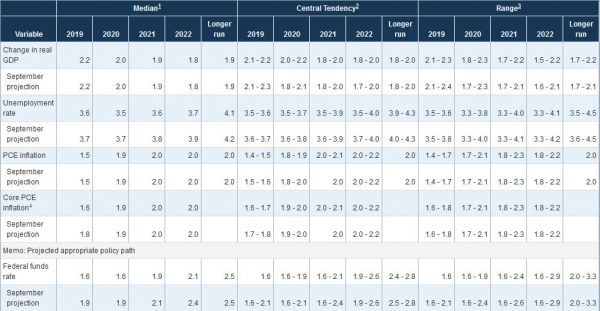
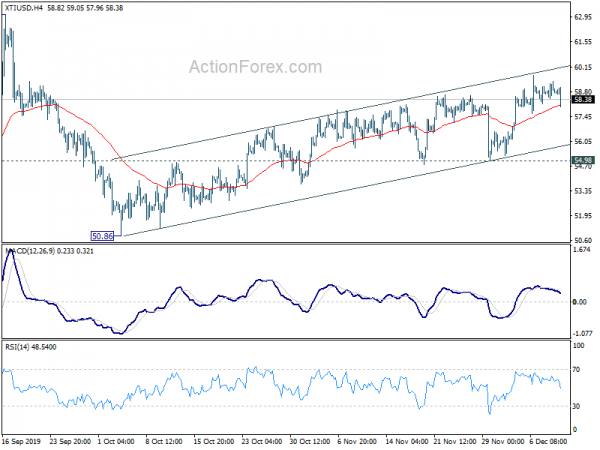
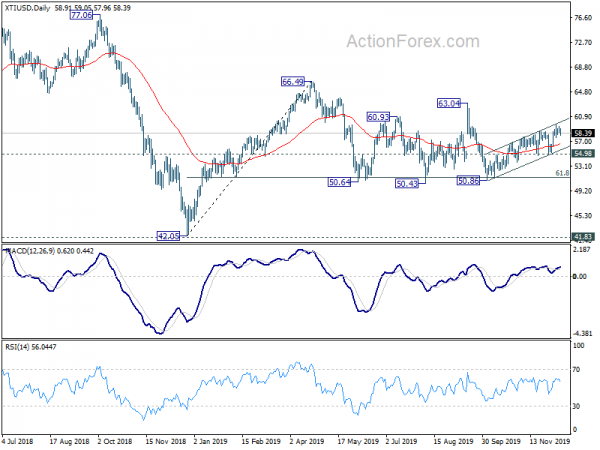
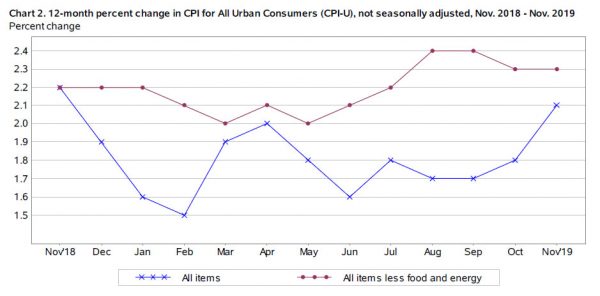
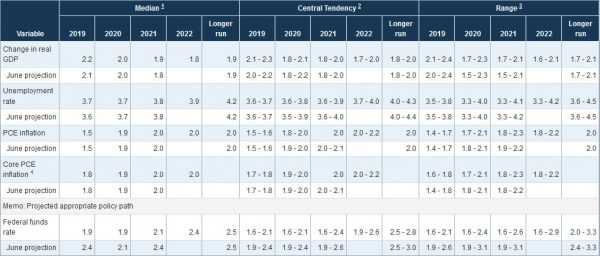
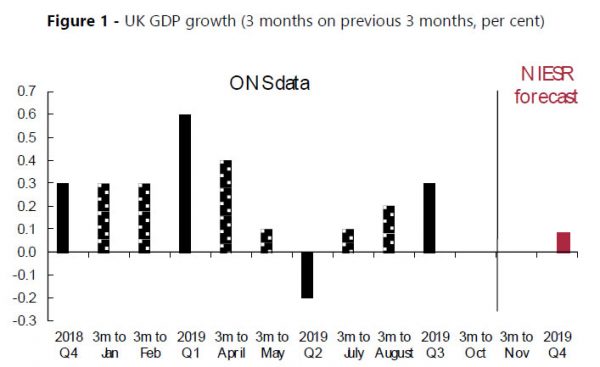
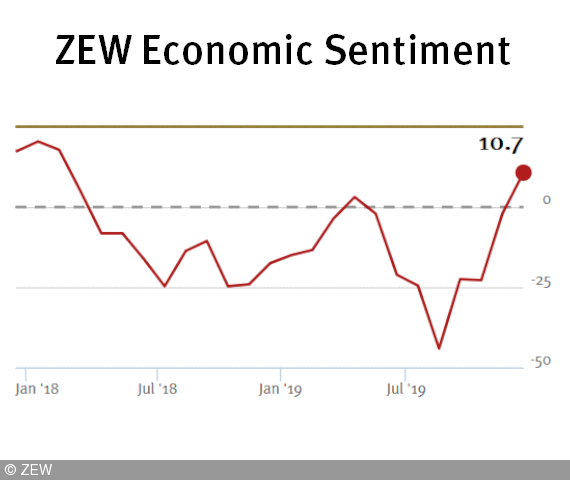
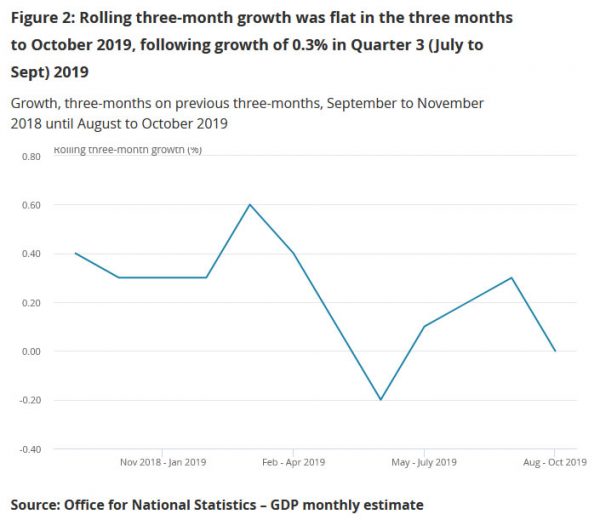
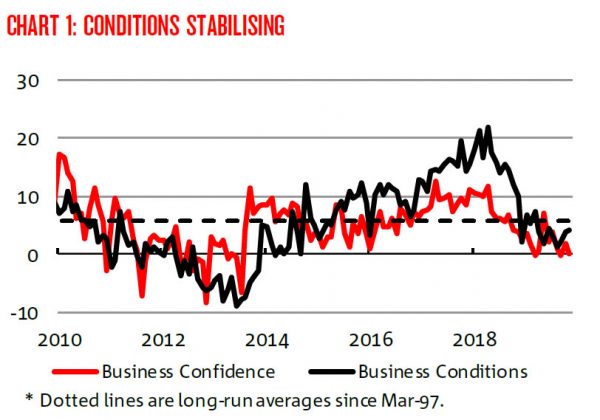
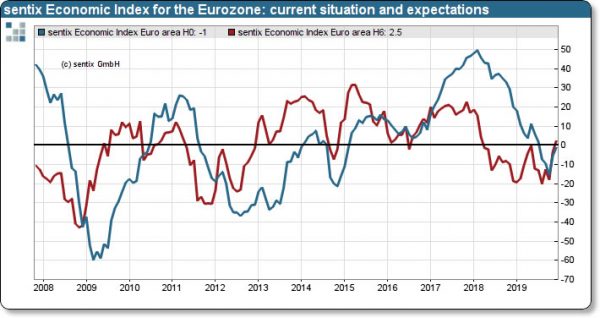
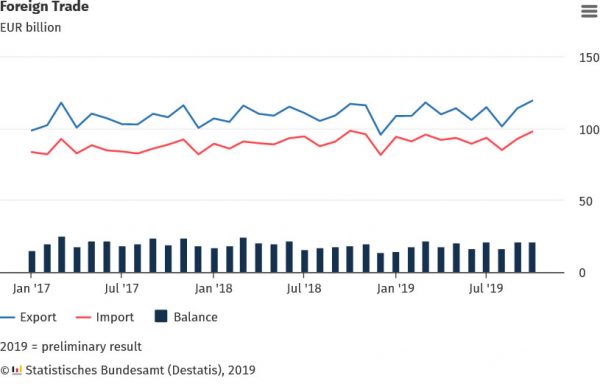

Dollar index breaks key support on Fed Powell and projections
Dollar was sold off deeply overnight after Fed Chair Jerome Powell hinted that Fed will stay on hold unless inflation materially surprises on the upside ahead. Fed’s median projections might point to one hike in each of 2021 and 2022 after staying on hold for next year. Core inflation projection, estimated at between 1.9-2.0% through the horizon, argues that there is indeed no need for the projected hikes.
In the press conference, Powell reinforced his recent messages that both the economy and monetary policy right now are “in a good place”. Outlook remains a “favorable one despite global developments and ongoing risks”. And, “as long as incoming information about the economy remains broadly consistent with this outlook, the current stance of monetary policy likely will remain appropriate.”
More importantly, he added that “we don’t have to worry so much about inflation”. It would take a “persistent” jump in inflation to warrant higher interest rates. At the same time, unemployment can remain at quite low levels for an extended period of time “without unwarranted upward pressure on inflation”.
Dollar index is now trading below the key support of 55 week EMA. More decline and sustained break of the EMA would confirm medium term topping at 99.66 and broke the up trend since 88.26. A correction would at least be seen to 38.2% retracement of 88.25 to 99.66 at 95.30.